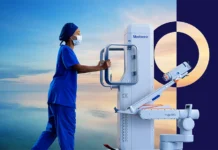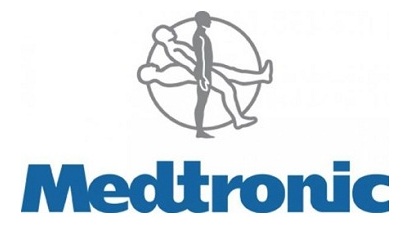Medtronic plc announced the online publication of ‘Effect of intrathecal baclofen on pain and quality of life in post-stroke spasticity: a randomized trial (SISTERS)’ in Stroke: A Journal of Cerebral Circulation (Stroke). These results, secondary endpoints of the ‘Spasticity In Stroke-Randomised Study’ (SISTERS) trial, demonstrate Intrathecal Baclofen Therapy (ITB Therapy(SM)) with Lioresal® Intrathecal (baclofen injection) reduces spasticity-related pain and improves quality of life more than conventional medical management (CMM) with oral antispastic medications.
“Despite its known benefits, ITB Therapy continues to be underused when it comes to treating severe spasticity in post-stroke patients,” said lead author and study investigator Michael Creamer, D.O., of Central Florida Pain Relief Centers in Orlando, Fla. “These secondary study results demonstrate that, in addition to treating excessive muscle tone associated with spasticity, ITB Therapy also addresses spasticity-related pain and quality of life and should be considered when assessing treatment options for post-stroke spasticity.”
Stroke can result in a number of physical, emotional, and daily living problems as well as pain.1 Spasticity, a condition where certain muscles are constantly being contracted, is a relatively common long-term complication of stroke, with up to 13 percent of post-stroke patients suffering from severe disabling spasticity.2 Patients with post-stroke spasticity (PSS) tend to experience a higher incidence of pain and lower health-related quality of life (QoL) compared to patients with normal muscle tone.3
Results of the study show ITB was more effective than CMM over six months using Numerical Pain Rating Scale (NPRS) scores for actual and least spasticity-related pain. Further, a majority of ITB patients (73 percent vs. 48 percent of CMM patients) reported satisfaction with spasticity reduction at month 6. Demonstration of greater improvements in pain and QoL with ITB compared to CMM in this trial enhance existing data associated with ITB’s impact on spasticity.
SISTERS is the first randomized, controlled, open-label, multicentre study to evaluate the efficacy and safety of ITB Therapy versus CMM with oral antispastic medications for treatment of PSS after six months’ active treatment. The study randomized 60 patients in Europe and the United States. Primary outcomes results were published in January 2018 in the Journal of Neurology, Neurosurgery & Psychiatry. In this new paper, the results are presented for other pre-specified secondary outcomes of SISTERS, including assessment of pain and QoL measures and patient satisfaction with therapy.
More patients reported adverse events in the ITB group (24/25 patients, 96 percent; 149 events) compared to CMM (22/35, 63 percent; 77 events), although events were generally consistent with the known safety profile of ITB Therapy. Around half of the drug, device and procedure related adverse events occurred during implant and titration phase. No patient discontinued ITB Therapy due to treatment related adverse events.4
“Spasticity-related pain is a common and often overlooked after-effect of stroke that can also negatively impact quality of life, especially in patients experiencing post-stroke spasticity,” said Charlie Covert, vice president and general manager, Targeted Drug Delivery, Medtronic Pain Therapies. “At Medtronic, we’re committed to raising awareness of ITB Therapy as an effective treatment for severe PSS. We are pleased these results show that additional improvements are possible with improved spasticity management.”
About ITB Therapy
ITB Therapy with Lioresal Intrathecal (baclofen injection) is indicated for use in the management of severe spasticity resulting from stroke, spinal cord injury, multiple sclerosis, cerebral palsy and brain injury. Patients should first respond to a screening dose of Lioresal Intrathecal prior to consideration for long term infusion via an implantable pump. For spasticity of spinal cord origin, ITB Therapy should be reserved for patients unresponsive to oral baclofen therapy, or those who experience intolerable CNS side effects at effective doses. Patients with spasticity due to traumatic brain injury should wait at least one year after the injury before consideration of long term ITB Therapy.
About SynchroMedII Intrathecal Drug Delivery System
The Medtronic SynchroMed II pump and catheter are implanted under the skin and deliver medication into the intrathecal space, enabling clinicians to prescribe the lowest possible dose and tailor drug delivery to patient needs. Patients with chronic, intractable pain or severe spasticity who have not had success with other treatment options or have experienced intolerable side effects with oral medications are candidates for SynchroMedII. The system is also full-body MRI conditional under conditions specified in the product labeling. More than 375,000 patients worldwide have received therapy from Medtronic drug infusion systems since they were introduced over 30 years ago.5



















